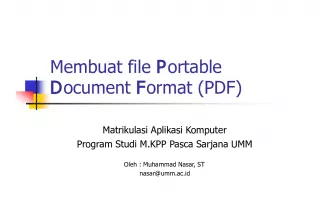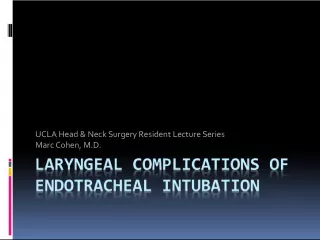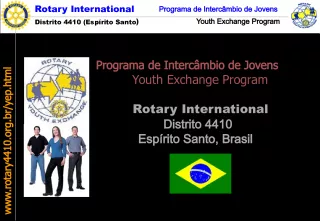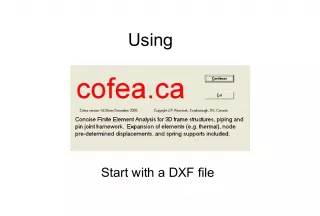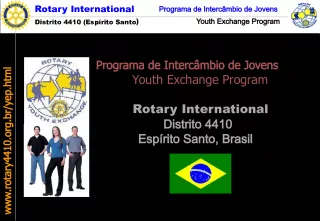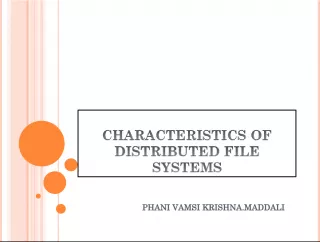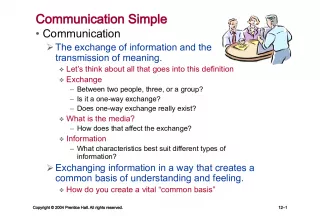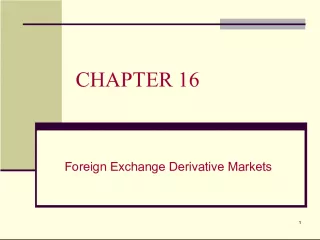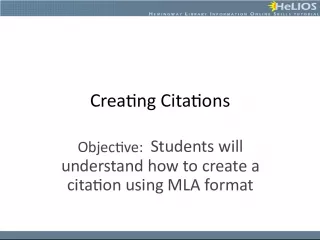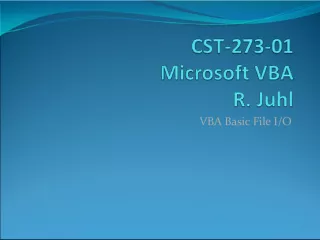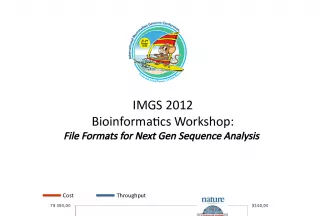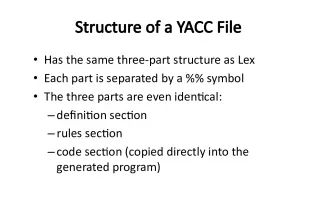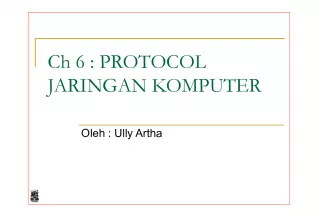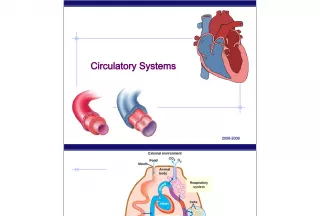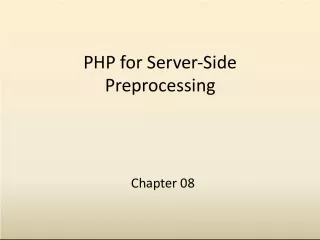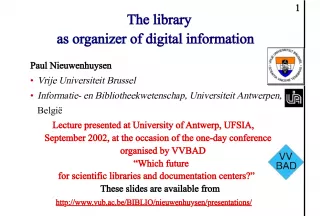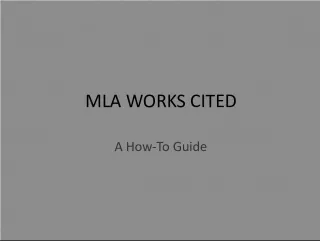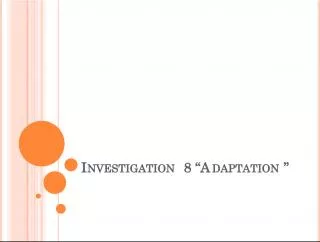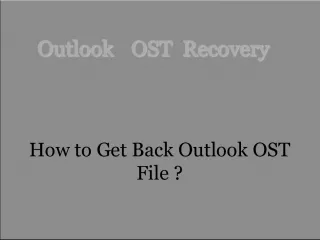MARC: The File Format for Exchange of Cataloging Information


Learn about the history and advantages of the Machine Readable Cataloging (MARC) file format, created in the 1960s for the Library of Congress and now used by libraries worldwide to share bibliographic information. With a collection of over 183 million records and growing, MARC is a critical tool for libraries.
- Uploaded on | 0 Views
-
 mayrakuphal
mayrakuphal
About MARC: The File Format for Exchange of Cataloging Information
PowerPoint presentation about 'MARC: The File Format for Exchange of Cataloging Information'. This presentation describes the topic on Learn about the history and advantages of the Machine Readable Cataloging (MARC) file format, created in the 1960s for the Library of Congress and now used by libraries worldwide to share bibliographic information. With a collection of over 183 million records and growing, MARC is a critical tool for libraries.. The key topics included in this slideshow are MARC, cataloging, file format, Library of Congress, bibliographic records,. Download this presentation absolutely free.
Presentation Transcript
1. Kathryn Lybarger and Julene Jones May 20, 2010
2. MARC = MAchine Readable Cataloging File format for exchange of cataloging information MARC has many advantages
3. Created in 1960s for Library of Congress ANSI standard (1971) ISO standard (1973)
4. Large collection, only growing OCLC has 183 million bibliographic records New record added every ten seconds
5. Bibliographic Holdings Authority
7. 000 01373cam a2200433 a 4500 001 2237424 005 20070330085528.0 008 050107s2004 nyua b 000 1 eng 010__ |a 2004048210 020__ |a 0143039067 024__ |a 2126912 035__ |a (OCoLC)ocm55044526 040__ |a DLC |c DLC |d OCLCQ 049__ |a KUJY 05000 |a PS3545.E365 |b D3 2004 08200 |a 813/.52 |2 22 1001_ |a Webster, Jean, |d 1876-1916. 24510 |a Daddy Long Legs ; |b and, Dear enemy / |c Jean Webster ; edited with an introduction and notes by Elaine Showalter.
8. _ (blank) # OPAC: OCLC Connexion Client (and actually in file): LC MARC Bibliographic Documentation: OCLC Bib Formats documentation:
9. |a a a $a OPAC: OCLC Connexion Client: Voyager: OCLC Connexion Browser:
10. Binary: 0 0 0 1 1 1 1 1 Decimal: 31 Hex: 1F
11. MARC is often displayed as text MARC is not plain text You need a MARC editor to easily edit MARC
13. 001 000800000 005 001700008 008 0041 00025 035 002400066 040 001300090 03 5 002100103 043 001200124 090 002400 136 049 000900160 100 003400169 245 0 08400203 260 004600287 300 00210033 3 505 058000354 651 004000934 650 003 800974 710 002401012 946 001201036 9 94 001201048
14. Tags are stored in the directory of the file Indicators and field contents are stored in the body of the record
15. 001 0008 00000 0050017000080080041000250350 0240006604000130009003500210010304300120 0124090002400136049000900160100003400169 2450084002032600046002873000021003335050 5800035465100400093465000380097471000240 1012946001201036994001201048 001 2885040 Field 001, 8 bytes long, starts at 0
16. Fixed fields are always the same size In a bibliographic record, there are always four bytes for illustration data: ____ (four blanks): no illustrations abcd : illustrations, maps, portraits, charts abcd : illustrations, maps, portraits, charts, plans, plates and music
17. Variable fields are not always the same size. The title field may vary in length: The Iliad Alexander and the Terrible, Horrible, No Good, Very Bad Day
18. 00100080000000500170000800800 41000250350 0240006604000130009003500210010304300120 0124090002400136049000900160100003400169 245 0084 00203 2600046002873000021003335050 5800035465100400093465000380097471000240 1012946001201036994001201048 245 14$aThe nonsense novels ;$band, The dawn of Canadian history /$cby Stephen Leacock. Field 245, 84 characters long, starts at position 203
19. Variable fields make MARC flexible and compact Some structural metadata is needed to make this happen This book-keeping is usually (thankfully) invisible
20. Binary characters represented as text Data in a reasonable order Structural metadata hidden
21. Many MARC editors allow editing only one record at a time You may want to do batch editing You may want to do something nobody has ever considered before!
22. How many records in my file? Do they all have a field that I require? Does that field contain what I require? Are there any fields I dont want?
23. Remove a field in all records Add a field to all records Modify a field in all records Swap data between fields Change character encoding
24. Create (one or more) holdings records based on bibliographic record content Extract some fields to make an RSS feed of new books in your catalog
25. Suite of tools for working with MARC Developed by Terry Reese at Oregon State Free download for Windows, Linux, Mac
26. MarcBreaker converts MARC to Mnemonic file format MarcMaker converts Mnemonic file format to MARC MarcEditor text editor for making common MARC edits MARC Spy hex editor, good for finding problems in corrupted MARC records
30. Regex or regexp A more general (and powerful) search or search-and-replace A regular expression is a pattern which matches parts of your file
31. grep Powerful text editors: MarcEditor, vim, emacs Programming languages: perl, php
32. Expression: Mar Matches: Mar k Twain Steve Mar tin Telemarketing (case sensitive)
33. Expression: ^Mar Matches: Mar k Twain only this one Steve Martin Telemarketing
34. Expression: tin Matches: Mark Twain Steve Mar tin Telemarke tin g
35. Expression: tin$ Matches: Mark Twain Steve Mar tin only this one Telemarketing
36. So how do you search for ^ or $ ? Escape special characters with \ \$1 matches $1 .35 2\^ matches 2 + 2^ 4 = 18 So how do you search for \ ?
37. You can modify searches just slightly for much more specific results You can use multiple simpler expressions You can ask other people (MARCEDIT-L)
38. ^ $ . + ? * ( ) [ ] { } | \
39. You can search for one of several phrases (a|b|c|d) Example: (Bob|John|Joe) Smith Matches: Bob Smith Does NOT match: Robert Smith
40. Match not just one letter, but any of several Surround with [ ] Example: [BR]ob matches Bob , Rob , Rob ert Does NOT match: Toby, bobbing, robbery
41. Match anything that is NOT in a specified list of characters Surround with [^ ] Example: [^aeiou]a matches scu ba , Wild ca t, da zzle, aard va rk Does NOT match: each, toad, visual, antique
42. A period matches any character Example: ..an Matches: w oman watc hman Does NOT match: man
43. Find all subject headings with second indicator other than 0 or 2 ^=6.. .[^02] Matches: =650 \7$aFilms$xMontage.$2 ram
44. * any number of what it follows ? 0 or 1 of what it follows + 1 or more of what it follows Example: .*
45. * any number of what it follows ? 0 or 1 of what it follows + 1 or more of what it follows Example: Joh?nathan
46. Replace matched part with a static string OR Capture parts of what you match with ( ) Use those captured parts in your replacement
47. $1 contents of first parentheses $2 contents of second parentheses Search: (.*) (.*) Replace: $2, $1 Bob Jones Jones, Bob
48. $0 whole string matched Example: make all URLs hyperlinks Search: http://[^ ]+ Replace: $0
49. Make sure all 245 fields have $h [electronic resource] Search: ^=245.*\$h\[electronic resource\] Replace all: $0 This makes no real changes to your file, but lets you know how many matches it found
50. Many books and websites http://www.regular- expressions.info/ Unix man pages: man perlretut
